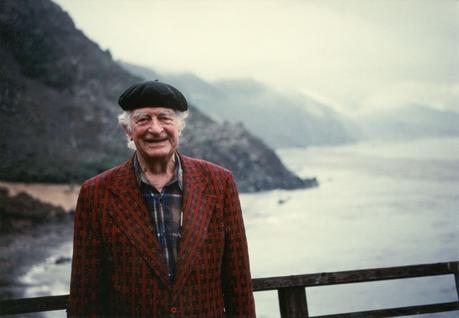
Pauling in 1989 – an extraordinary life. Photo by Paolo M. Sutter.
" data-orig-size="900,624" sizes="(max-width: 900px) 100vw, 900px" data-image-title="1989i.48" data-orig-file="https://paulingblog.files.wordpress.com/2014/11/1989i-48.jpg" data-image-description="" data-image-meta="{"aperture":"0","credit":"","camera":"","caption":"","created_timestamp":"0","copyright":"","focal_length":"0","iso":"0","shutter_speed":"0","title":"","orientation":"0"}" data-medium-file="https://paulingblog.files.wordpress.com/2014/11/1989i-48.jpg?w=300" data-permalink="https://paulingblog.wordpress.com/2014/11/24/post-500/1989i-48/" alt="" srcset="https://paulingblog.files.wordpress.com/2014/11/1989i-48.jpg 900w, https://paulingblog.files.wordpress.com/2014/11/1989i-48.jpg?w=150 150w, https://paulingblog.files.wordpress.com/2014/11/1989i-48.jpg?w=300 300w, https://paulingblog.files.wordpress.com/2014/11/1989i-48.jpg?w=768 768w" class="wp-image-6332" data-large-file="https://paulingblog.files.wordpress.com/2014/11/1989i-48.jpg?w=468" />Pauling in 1989. Photo by Paolo M. Sutter.[Part 8 of 9]
When the first edition of their book, Cancer and Vitamin C, was published in 1979, popular support for the curative powers of vitamin C did not materialize in quite the way that the authors, Linus Pauling and Ewan Cameron, had hoped. In part due to negative press associated with a critical study conducted by researchers at the Mayo Clinic, mainstream readers found themselves disinclined to buy into the thesis that vitamin C could fight cancer in the ways that Pauling and Cameron had put forth.
But over time, the conventional wisdom began to shift a bit, and in 1989 scientists from around the world convened in Bethesda, Maryland to once again discuss the merits of vitamin C as a cancer fighting agent. Sponsored by the National Institutes of Health (NIH), the conference was attended by respected scientific leaders, many of whom left the three-day event with a sense that the world might finally start to agree with Pauling and Cameron.
Held in April 1989, “Ascorbic Acid: Biological Functions and Relation to Cancer” marked the first time that two agencies within the NIH – the National Cancer Institute and the National Institute of Diabetes and Digestive Kidney Diseases – had co-sponsored an event. In total, about 130 people attended the meeting, with some 40 talks and papers presented over the three days.
Because of the breadth of its participants, the research presented at the conference covered multiple angles of the vitamin C and cancer connection. One speaker was Dr. Balz Frei from the University of California, Berkeley (and later the director of the Linus Pauling Institute) who discussed how peroxidation and prooxidant reactions can lead to cancer. Frei pointed out that these reactions happen frequently, and that behaviors like smoking can make the reactions even more prolific, which helps to explain how smoking can lead to cancer. Frei also found that these reactions did not occur when cells were exposed to vitamin C, but as soon as the vitamin C was removed, the reactions began again. Similarly, a team from Japan led by Dr. Etsuo Diki found that free radicals, when present in the body, can lead to cancer, and that vitamin C was capable of destroying them more quickly than could any other substance under study.
Even though much of the research was presented by scholars new to the field, many of the old believers were in attendance as well, including Pauling and several colleagues from his institute. Pauling’s talk focused on a recent study involving mice who were afflicted with cancer via ultraviolet light, and then treated solely with vitamin C. Pauling’s team found that, once treated, cancerous growths did not develop further and incidences of cancer reduced in general. Another similar study conducted by Pauling and his team on mice and spontaneous cancer in the mammary glands found that when the mice were given vitamin C, the time to onset of cancer was notably delayed.
Others presented similar types of work. One paper demonstrated that the effectiveness of chemotherapy improved when vitamin C was added to the drinking water of mice with cancer. And a team from Pennsylvania found that mice that were given vitamins C and B12 exhibited a complete inhibition of cancer growth with no damage to healthy, non-cancerous cells. The team’s results had been so encouraging that they treated a collection of human patients with vitamins C and B12, with positive results.
A different group found that, when vitamin C was given in conjunction with chemotherapy, patients tended to retain a statistically significant amount of healthy tissue as compared to those who were not given vitamin C. Other presentations found that vitamin C in cancer patients is not excreted in urine, despite drops in blood concentration, leading to the conclusion that the vitamin was being “used up” in fighting cancer. Vitamin C also seemed to reduce the toxicity of certain chemotherapeutics, including Adriamycin, a well-known cancer drug.
The conference ended with a talk from the macro perspective by Dr. Gladys Block, an epidemiologist at the National Cancer Institute. Block determined that, to date, there had been 47 studies conducted which demonstrated that vitamin C provided a measure of protection against cancer, and that 34 of these put forth data that was statistically significant. Block argued that if chance was the only reason why vitamin C had been found useful, then only one or two of the studies would have been statistically significant. But the fact that 34 studies met the threshold of statistics was both decidedly meaningful and encouraging. Block’s remarks closed the event, which concluded with “thunderous applause and a standing ovation.”
